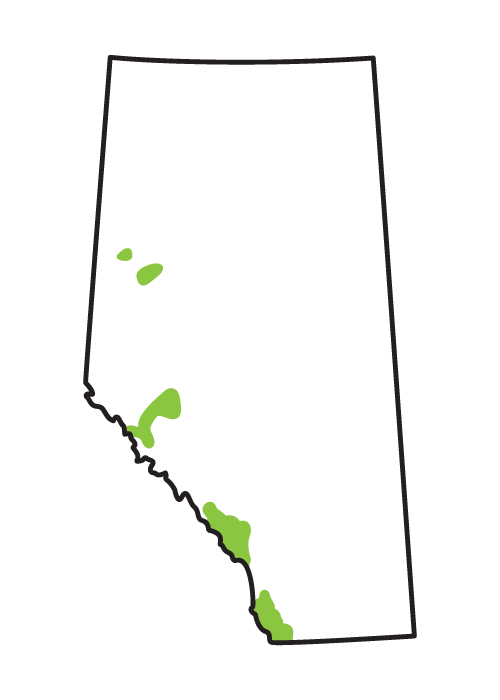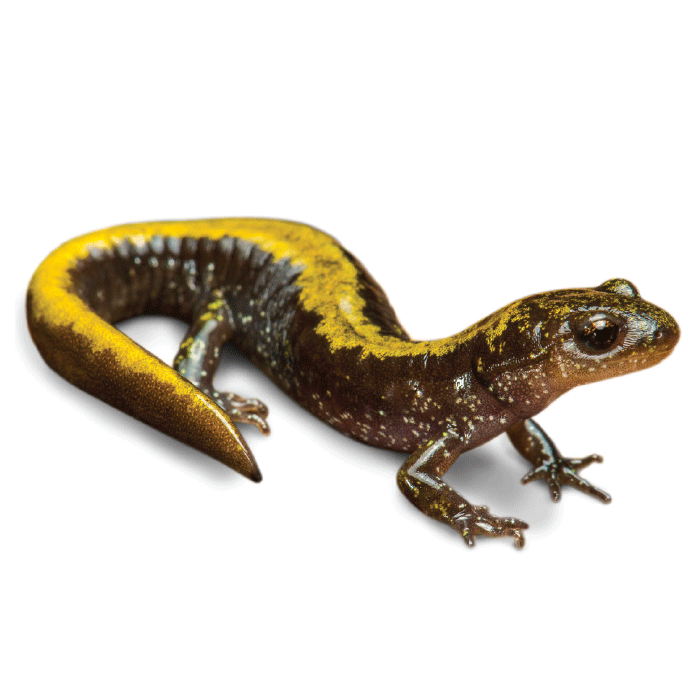Juvenile and Adult
- Yellow or olive-green stripe from head to tip of tail; may be broken into a series of blotches; rarely absent in juveniles
- Fine white or bluish flecks on sides and legs
- The longest toe on the hind foot is longer than the palm of that foot and noticeably longer than other toes
- Background colour: brownish-grey to black
Body length: up to 15 cm
Call
- Does not broadcast a breeding call
Eggs
- Laid singly or in small globular clusters with each egg having a relatively thick jelly layer
Larva in middle of development
- Three conspicuous feathery external gills on either side of head
- Longest gill stalk shorter than head length
- Gray or light brown, with dark flecks and silvery body
Range

- Mountain passes and associated river valleys along the front range of the Rocky Mountains, including subalpine and alpine areas
- At higher latitudes, found further east into the foothills and Peace River Valley, near Fairview
Subspecies
- Eastern Long-toed Salamander (Ambystoma macrodactylum krausei)
- Northern Long-toed Salamander (Ambystoma macrodactylum columbianum)
There are two recognized subspecies of the Long-toed Salamander in Alberta. The Northern Long-toed Salamander is found near Banff and in the northern portion of the species’ range, while the Eastern Long-toed Salamander is found in southwestern Alberta. Some hybridization occurs between the two subspecies and genetic analysis is required to reliably tell the two subspecies apart.
Learn more about the Long-toed Salamander


